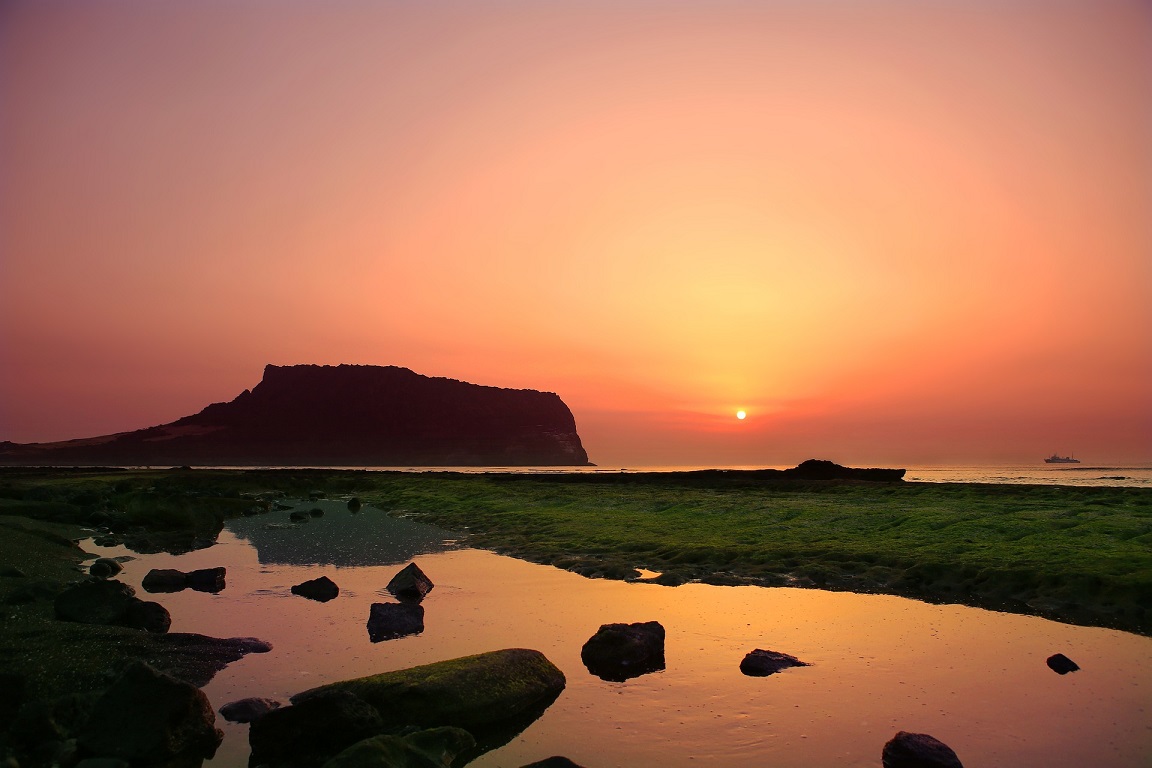The War in Vietnam and the bombing of Hiroshima and Nagasaki are some of the examples of the US brutality around the world. In the island of Jeju in South Korea, the dreams of a free society were crushed by the North Americans. A crime that was silenced for decades.
 Juanjo Andrés Cuervo
Juanjo Andrés Cuervo
In 1984, George Orwell wrote one of his most symbolic phrases: “Who controls the past controls the future: who controls the present controls the past”. Published in 1949, his book was written at the hight of the Cold War. His idea summarises the importance of history for understanding the world and how the elites employ the narrative of the past to subjugate the masses.
There are many examples of rewriting history from above. The era of colonialism and empire in Great Britain, the Algerian War of Independence in France or Franco’s dictatorship in Spain have left a controversial legacy which still permeates our societies.
Historical memory is one of the most important assets of our democracies. Remembering the past is essential to avoid the same mistakes and imagine alternatives to follow in the future.
On Jeju Island, located in the South Western part of South Korea, the inhabitants have been struggling for decades to remember one of the direst episodes in the 20th Century.
As they tried to establish a free Government, they suffered the atrocities committed by the United States Army Military Government in Korea (Usamgik). During the Cold War, 30,000 of the inhabitants were killed.
 Jeju 4·3 Peace Park: remembering the foreign intervention
Jeju 4·3 Peace Park: remembering the foreign intervention
When I went to Jeju Island in March 2023, I visited the Jeju 4·3 Peace Park. Opened in March 2008, this historical museum was built to pay tribute to the victims and promote reconciliation.
Located in a huge area surrounded by mountains and trees, you can see many monuments to commemorate the people who were killed between 1947 and 1954.
The Sculpture ‘Biseol’ is indicative of the horrors that were perpetrated during those years. Located in the open air, this is a statue of a mother holding a baby, representing these two people who were murdered during that period.
Walking throughout the Memorial Service Altar, the Exhibition Rooms or Memorial Tablets Enshrinement Room, it was difficult to ignore a feeling of despair.
Why were 30,000 people killed? What was the relationship between the end of World War Two and the subsequent Cold War? What was the role of the United States in the massacre?
In 1945, when Japan was losing the war, the People’s Committee was created. Organised by leftists, it was operating in many areas of Korea. After the end of World War Two, the country was divided between an American-backed government in the South and a Soviet-backed one in the North by the 38th Parallel.
 In the Jeju 4.3 Peace Park, there is a quote by one of the members of the USA cabinet who took the decision to split the Peninsula. He said that he just saw the map after Japan’s defeat, and considered it wise to divide the country in that way.
In the Jeju 4.3 Peace Park, there is a quote by one of the members of the USA cabinet who took the decision to split the Peninsula. He said that he just saw the map after Japan’s defeat, and considered it wise to divide the country in that way.
Whereas the international powers played with Korea, its inhabitants refused to be colonised again.
In the newly created South Korea, the United States were aware of the social hegemony maintained by the People’s Committee. The only way to disband it was through force.
Jeju 4·3 Uprising and Massacre
From 8 September 1945 to 15 August 1948, the Usamgik acted as the ruling body of South Korea. It successfully disbanded all the People’s Committees. The only exception was Jeju.
However, the international political juncture was highly unfavourable for the inhabitants of the island. The start of the Cold War increased the paranoia among the American and South Korean elites. Hence, the US officers started to label Jeju as the ‘Red Island.’ In a time of anti-communist hysteria, the fate of its people was doomed.
 As a consequence, from the March 1 Independence Movement in 1947 until 1954 thousands were killed. Meanwhile, the Korean War (1950-1953) only increased the repression against people who wanted to establish a fair and egalitarian society.
As a consequence, from the March 1 Independence Movement in 1947 until 1954 thousands were killed. Meanwhile, the Korean War (1950-1953) only increased the repression against people who wanted to establish a fair and egalitarian society.
The legacy of an alternative political system
To remember the history, the 4.3 Jeju Peace Park act is an essential part of Korean past. The date of 3 April 1948 symbolizes the Uprising. It was the day when Koreans on Jeju Island organized an armed rebellion for a unified, independent country, free of US colonization. They were severely defeated, murdered, repressed, and forced to remain silent. They were demonised for decades. Their history had fallen into oblivion. Until thousands of brave inhabitants in Jeju united and struggled to remember.
Their example shows that an alternative society is possible. They were able to manage their own affairs through people’s involvement following a horizontal and direct approach. It was only the intervention of the United States allied with South Korean’ elites that crushed their dreams.
Every 3 April, people in Jeju gather in the Jeju 4.3 Peace Park and go to the streets to remember their legacy.
(Photos: Pixabay)












.jpg)












